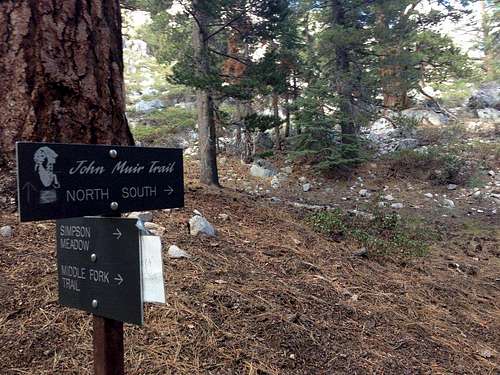Gear
Gear choices and setups are in a constant state of flux, change according to the demands of the trip, and will never be the same for every person. But for those who are interested, here is a broad gear list of my essential items.
Base weight: 13 lbs
GEAR
- 50L Osprey backpack
- Western Mountaineering SummerLite sleeping bag (32 degrees, 1lb 3oz)
- 5 panels of a Thermarest Z-lite sleeping pad
- Hexamid tent (single man, 1lb, trekking pole reliant)
- Black Diamond carbon Z-poles
KITCHEN
- lightweight stove
- Snow Peak Titanium cup and spoon
- Platypus bladder bowl (old water bladder cut in half)
- 2L water bladder
- 22oz bottle
- MSR HyperFlow water filter
- Bear bag
MISC
- John Muir Trail Atlas (mini map booklet)
- Leukotape
- Sports Shield (lubricating wipes)
- Dirty Girl gaiters
- Wash cloth
We brought a light weight tent and thin sleeping bags, unlike many fastpackers who just bring warm sleeping bags and a ground cloth, and forego the hassle of a tent. The tent we used, the Hexamid, weighs one pound and fits both of us, and each of our Phantom Sleeping bags only weigh a pound. So in our case, ounce for ounce, it was actually lighter to bring the tent instead of our warmer heavier sleeping bags and ground cloths or bivvies.
I brought my Osprey Aura 50 liter backpack. The pack itself weighs three pounds which pains me to think about. But, after testing many different packs, I choose to go with what felt most comfortable – my hips and back thanked me at the end of the day. As for Jason, he used the Osprey Hornet 46 liter, which only weighs a pound! But in exchange for saving heft this pack offers almost no back support or weight to hip distribution, it lies directly on your back, but this didn't bother him in the least. The only way to know what fits you best is to try it out.
Whether or not to bring a stove is an area of great debate. If you're fast packing and want to go light, a few days without hot food won't kill you, and might be worth the weight and space savings, as well as eliminating the hassle of cooking and cleanup. On many training hikes I went sans stove and ate cold ramen noodles for dinner, no boiling water needed. Unlike me, Jason has to have a hot breakfast and hot dinner to feel good, and he brought his stove. As I slurped down cold noodles I could smell the aroma of his piping hot dinners and steaming soups. So, when it came time to decide for the JMT I chose to bring a stove. We use lightweight aluminum stoves that weigh virtually nothing and don't take up much space, but on the downside, require a lot of attention to use safely. Considering how lightweight many stoves and container fuel are today, I believe the choice is more contingent on how much time you want to waste rather than an issue of weight. If you’re fastpacking 14 hour days you might much rather eat cold uncooked packaged food in a few minutes, than spend 30 minutes to prepare, eat and clean after a hot meal. But for me the comfort and taste of hot steaming ramen and creamy mac and cheese won me over.
fastpacking the John Muir Trail JMT running fast packing fastpack fast pack through hiking thru hiking thruhiking in 9 days nine days light weight ultralight baseweight ultra running mountain running
